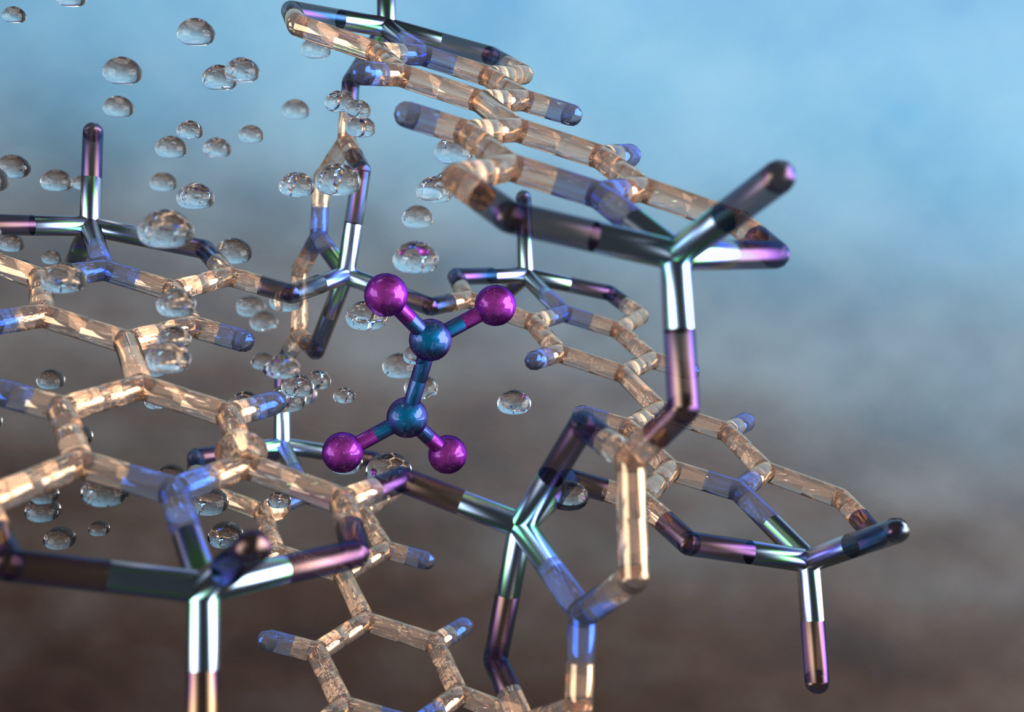A team led by the University of Manchester has developed a metal-organic framework material providing a selective, reversible and repeatable capability to capture a toxic air pollutant, nitrogen dioxide, which is produced by combusting fossil fuels. The material then requires only water and air to convert the captured gas into nitric acid for industrial use.

